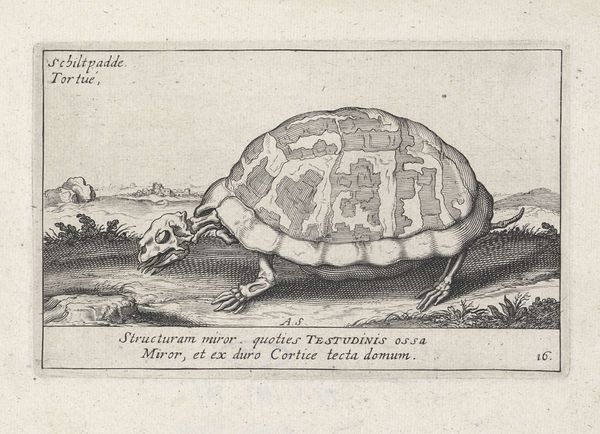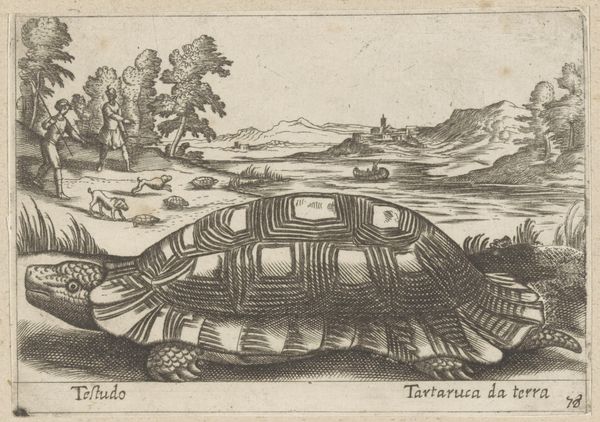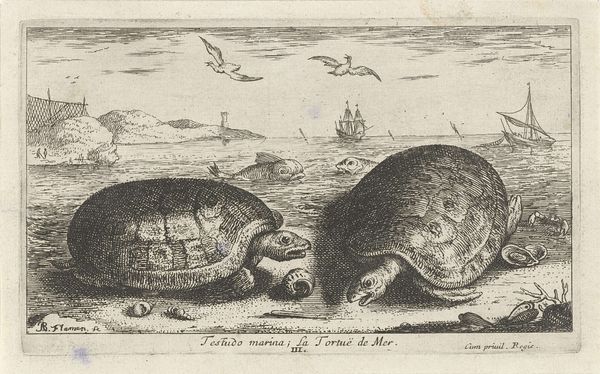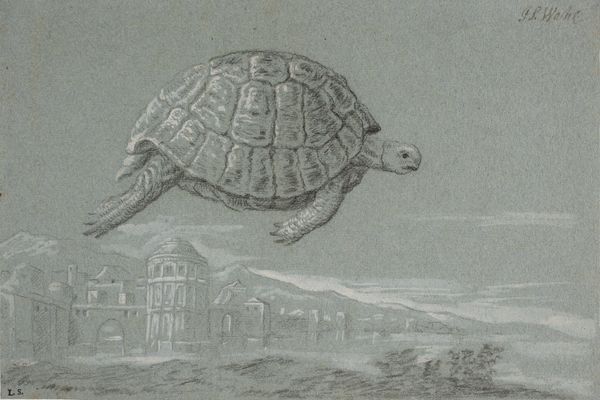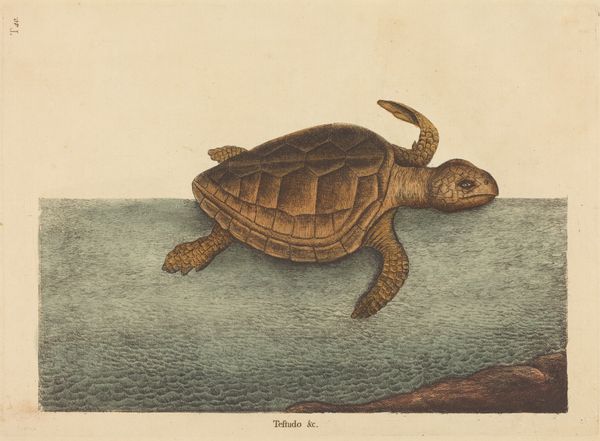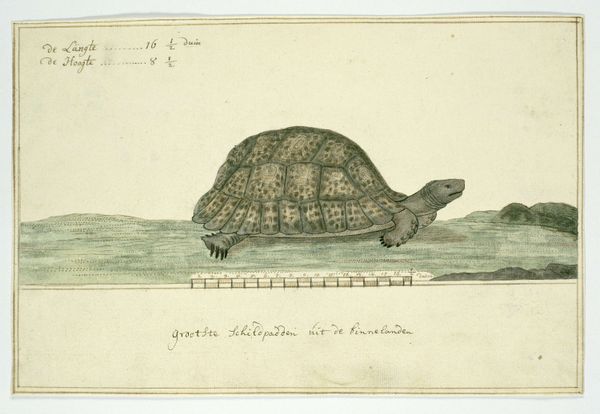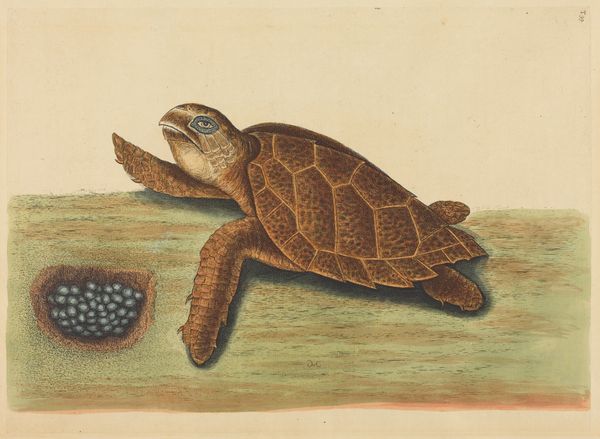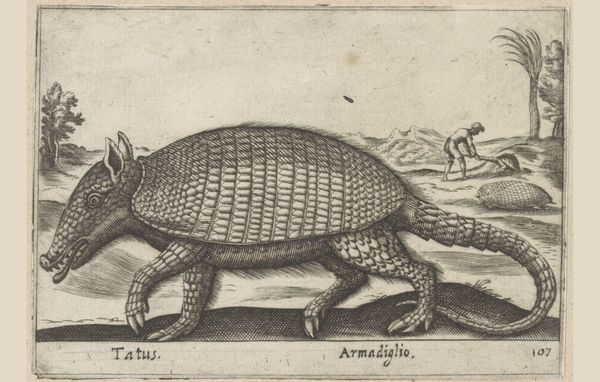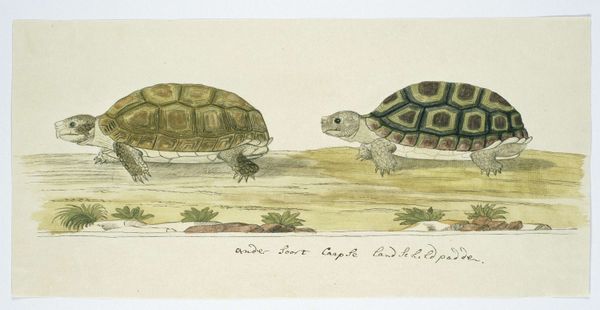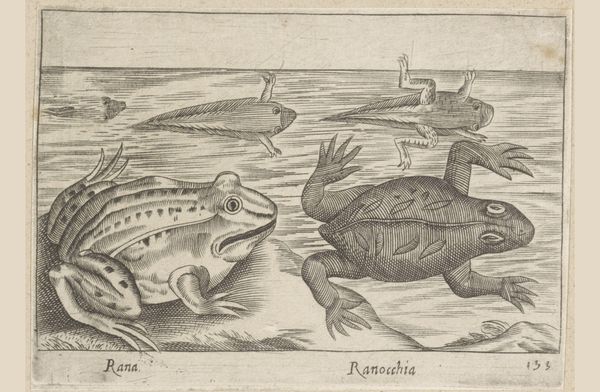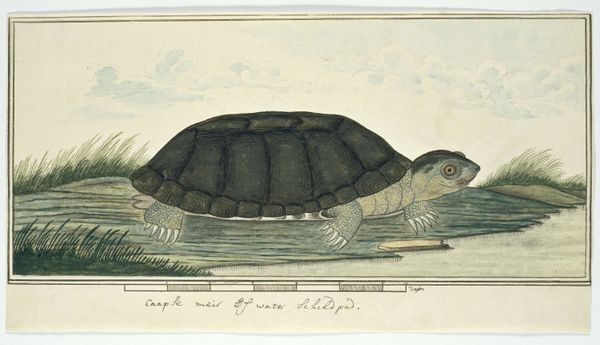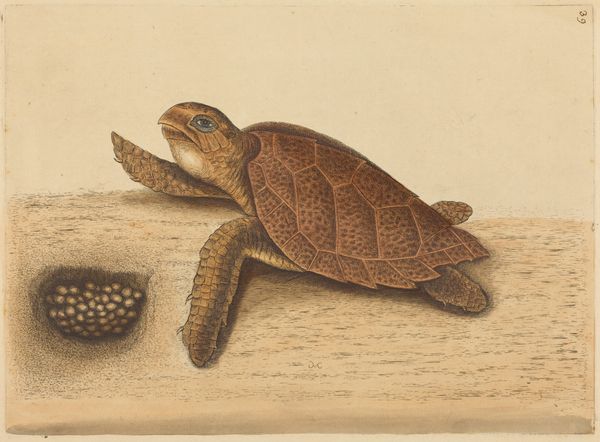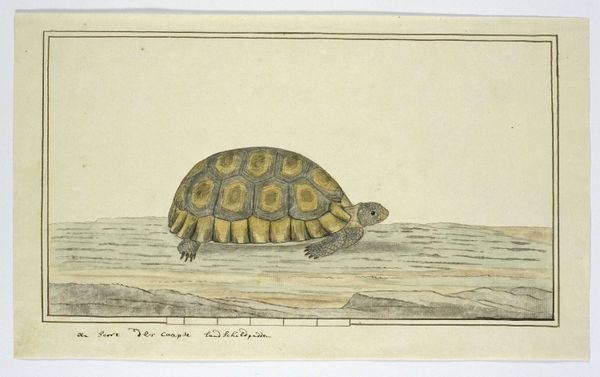
print, etching
#
toned paper
#
light pencil work
#
animal
# print
#
pen sketch
#
etching
#
pencil sketch
#
sketch book
#
landscape
#
personal sketchbook
#
pen-ink sketch
#
pen work
#
sketchbook drawing
#
history-painting
#
sketchbook art
#
realism
Dimensions: height 95 mm, width 137 mm
Copyright: Rijks Museum: Open Domain
Editor: Here we have Antonio Tempesta’s "Waterschildpad," or "Aquatic Turtle" created before 1650. It’s a detailed etching, and I’m struck by the texture of the shell; it feels both ancient and fragile at the same time. What grabs your attention in this piece? Curator: Oh, this little wanderer! I find myself imagining the world from its slow, steady perspective. Notice how Tempesta uses the landscape – not just as a backdrop, but as an extension of the turtle itself. It's a world both monumental and miniature, isn't it? Almost like a fleeting glimpse into a larger mythological narrative, with the turtle carrying the weight of centuries. Does it feel almost like a tiny Atlas, carrying the world? Editor: Definitely, I get that sense of weight. The detail is incredible for such a small print. It feels like more than just a scientific observation. Do you think Tempesta was trying to say something more profound? Curator: Perhaps. Back then, animals were often symbolic, representing virtues or vices. Given its longevity, a turtle might symbolize wisdom or steadfastness, but its shell could also represent protection, or even a kind of self-imposed isolation. Or perhaps, more simply, it's a celebration of the natural world, rendered with a loving eye and a delicate touch. Makes you wonder, what will endure? Editor: That's given me a lot to think about. It's amazing how a simple sketch of a turtle can open up so many layers of interpretation! Curator: Exactly! Art, like life, is often a delightful dance between the simple and the profound, isn’t it? And turtles, they’ve got ringside seats to it all!
Comments
No comments
Be the first to comment and join the conversation on the ultimate creative platform.
